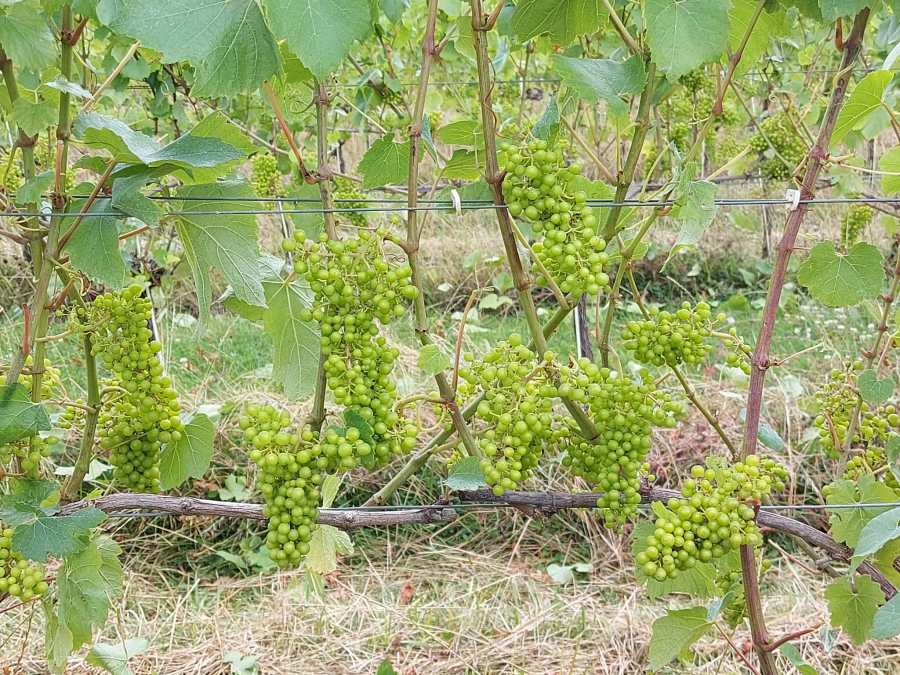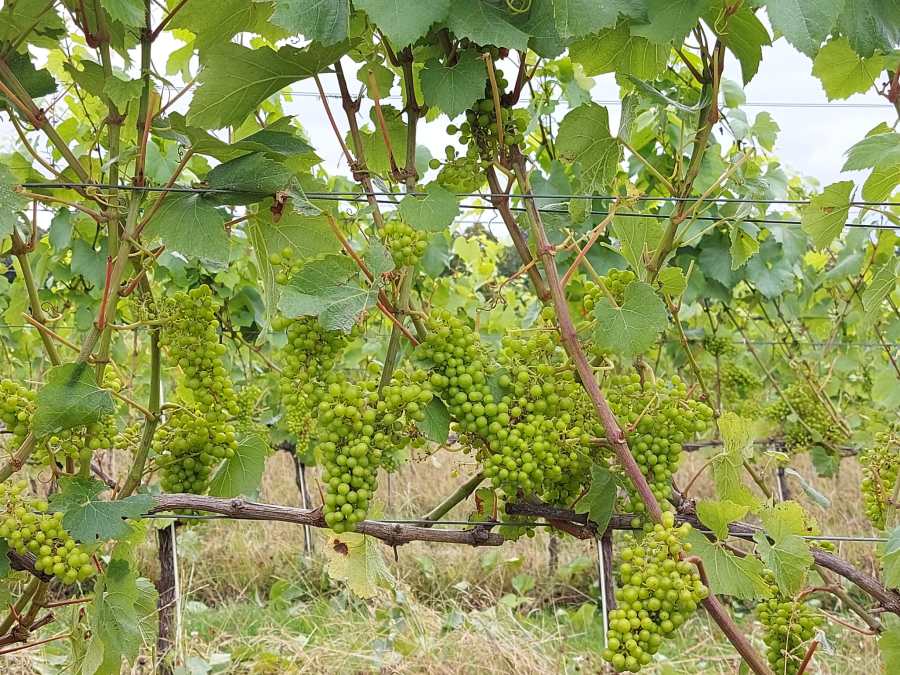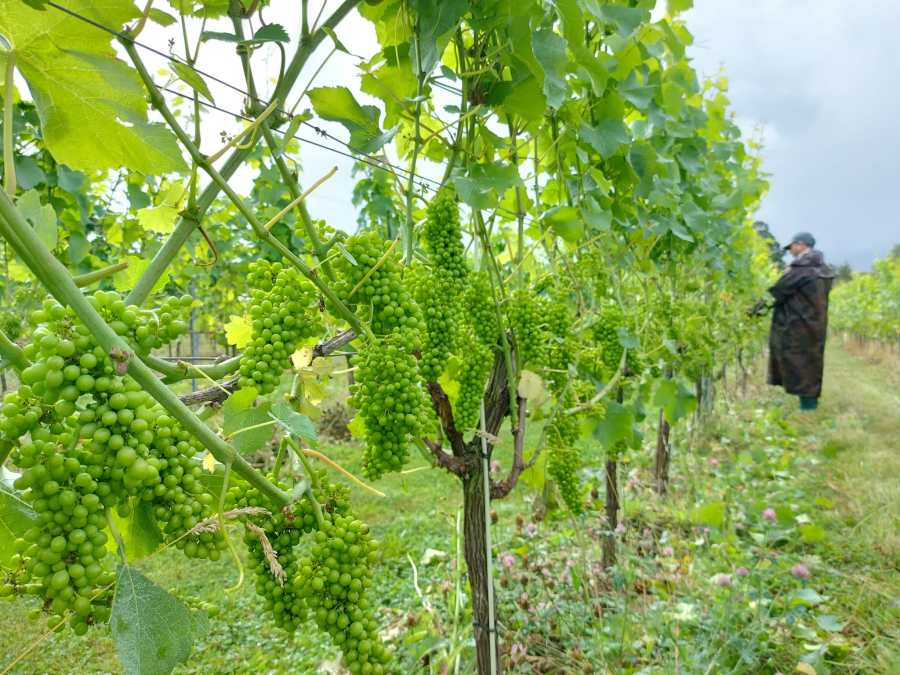How do you know to adjust crop load?
“It’s important to start by understanding your canopy and vine’s potential by monitoring charge counts and pruning weights and by canopy measurements such as leaf area to fruit ratio and leaf counts. These are the key metrics needed to assess how much crop the vine is capable of ripening,” explained Joel. “Also carry out general assessment of canopy health to check it is not compromised due to crowding, shading or disease. Collecting data and keeping records allows each season to be tracked and benchmarked to inform management decisions. There are several ways to manage your crop to balance yields, from post-flowering fruit thinning, to green harvesting and final adjustments at or just before harvest,” he added.
“As a rule of thumb, a bunch needs ten actively photosynthesising healthy ‘source’ leaves. Source leaves provide energy to the ‘sinks’- such as fruit and young leaves. In the first 30 days when the leaves are growing, they are essentially a sink as they require energy from the plant – more than they contribute. From 30 to 90 days the leaves are sources, providing energy for the rest of the vine. Older leaves are unproductive, and it is often these lower leaves that are removed to expose the fruit zone.”
Timing crop thinning
“There are three main times to make the decision to crop thin,” explained Joel. “The first is to carry out yield assessments around flowering, and, in line with the weather and the current season’s progress, it may be necessary to carry out some early season thinning. Doing this just post flowering decongests the bunch zone and helps to mitigate disease pressure – in particular Botrytis, powdery mildew and downy mildew. Thinning also serves to optimise sunlight interception, improve air flow and ensure each bunch has its space to grow and swell without being restricted or damaged. A damaged bunch is vulnerable to Botrytis infections, and this can then spread to healthy bunches,” he continued.
“Green harvesting is crop thinning that takes place during or after veraison. Observing the fruit at this time, it is clear which bunches are ripening and changing colour and which are lagging behind. This less ripe fruit will lower the average sugar levels and raise acidity. If thinning takes place in July after flowering, but the weather continues to be poor, then some green harvesting may be necessary to reduce the crop load further by removing unripe fruit and increase the overall average ripeness.
“A final pass to adjust the crop can take place on the day of harvest – again to raise the average sugar levels and lower acids (or the opposite! But less likely). This may also be necessary to cut out diseased fruit as a quality control measure,” he added.
Wine style
“Crop load management decisions need to be made with the winemaking in mind as different wine styles require different phenolic parameters. For example, fruit for a premium red wine needs to achieve greater ripeness in terms of sugar levels, acids and phenolic maturity compared to rosé, or a sparkling wine.
“No one vineyard situation is the same, so crop load management decisions will depend on vine age, variety, site and the season. In a poor year it would be wise to aim for the lower end of the yield range,” advised Joel.
Carbohydrate considerations
“Another aim of crop thinning is to ensure that fruit ripeness is achieved at an early enough harvest date to allow the vine some time post-harvest, with hopefully some decent weather to promote leaf and root activity, to accumulate carbohydrates. This encourages a full ‘food store’, which will provide the vine with energy to start the next season,” concluded Joel.
A guide to desired yields for different styles would be:
- Premium still reds: 5-8 tonnes/hectare
- Premium still whites: 5-8 tonnes/hectare
- Premium still rosés: 7-10 tonnes/hectare
- Sparkling wines: 8-12 tonnes/hectare

After bunch positioning and de-congestion of the fruit zone

Before bunch positioning and de-congestion of the fruit zone




